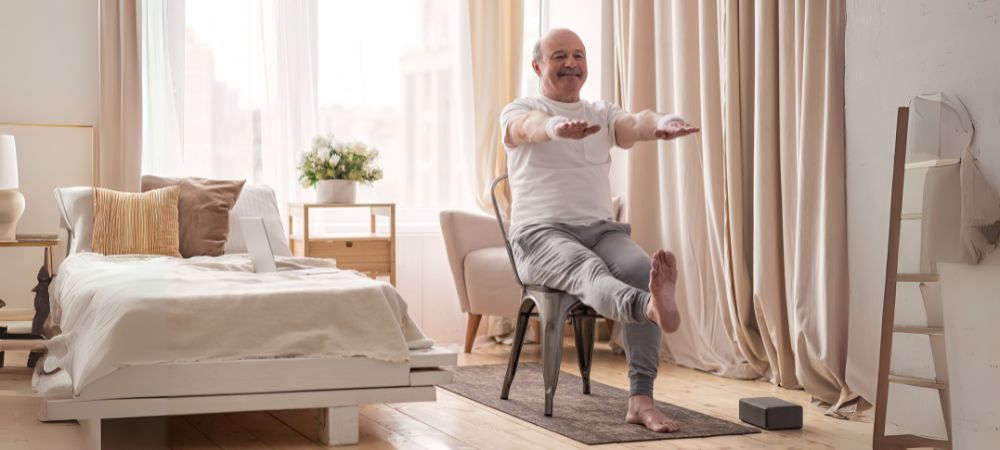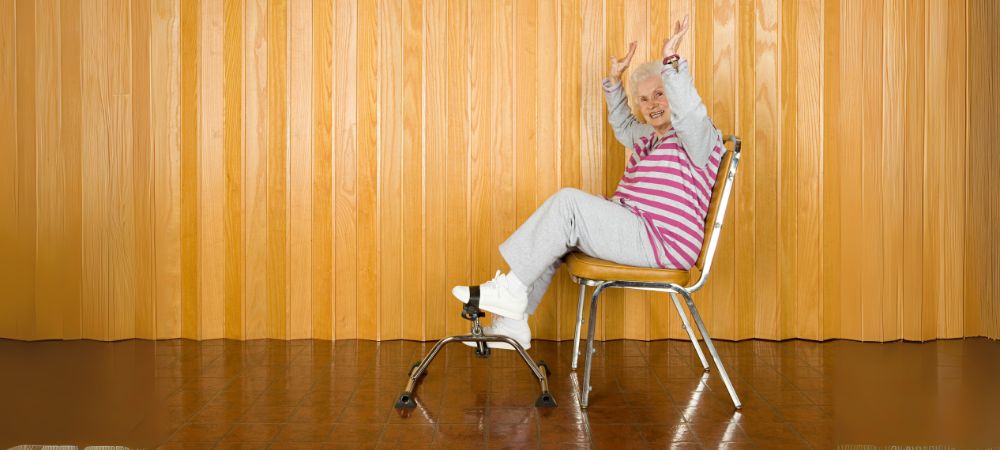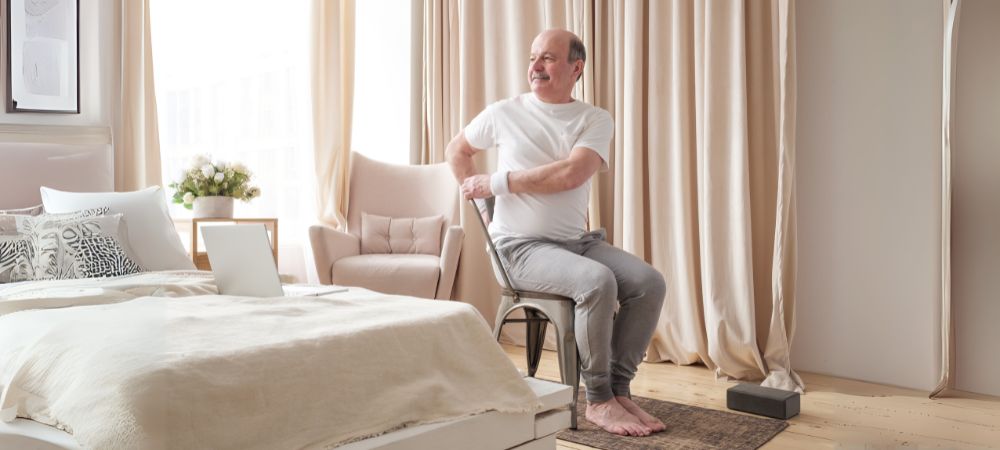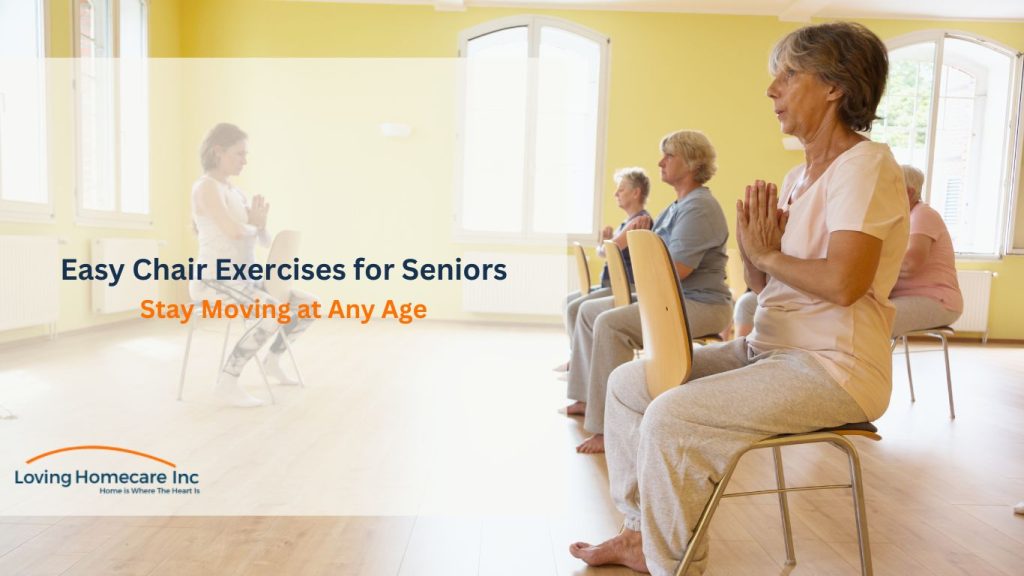Summary:
Chair exercises help seniors improve strength, balance, and flexibility, making them an ideal option for aging adults with limited mobility or joint pain. These exercises require no fancy equipment, just a sturdy chair and a little motivation to get started. By incorporating chair exercises into their daily routine, seniors can enjoy enhanced mobility and overall health. Loving Homecare encourages seniors to stay active, safe, and independent, offering support and guidance to ensure they can continue living their best lives with confidence and strength.
Not only do chair exercises help increase muscle tone, flexibility, and circulation, but they also support heart and bone health, boost mood, and reduce the risk of falls and chronic conditions like osteoporosis and heart disease. If you’re looking for reliable senior care San Gabriel Valley, incorporating chair exercises into your routine can complement arthritis care services and help prevent further complications from limited mobility.
Chair workouts for seniors can be easily modified for different fitness levels, making them an excellent option for those recovering from illness, managing chronic pain, or simply seeking a safer way to stay active. Whether you’re looking to improve your ability to perform daily tasks or simply want to feel stronger and more energetic, chair exercises can be a key part of healthy aging. And if you’re searching for in-home companion care services, these exercises are an ideal activity to do with a caregiver, promoting both physical health and companionship.
Who Should Consider Chair Exercises?
You should consider chair exercises as they are especially beneficial for:
- Adults aged 65 and older
- Individuals with limited mobility or those using assistive devices (walkers, canes, or wheelchairs)
- People recovering from injury or surgery
- Anyone looking to safely reintroduce physical activity into their life
Not everyone over 60 is slowing down, as many remain highly active. But for those facing mobility or balance challenges, chair exercises offer a safe, low-impact way to stay physically engaged, preserve independence, and promote overall well-being.
In a study of 302 older adults (mean age: 78.6 years) undergoing rehabilitation after stroke, the prevalence of sarcopenia (age-related muscle loss) decreased by 21.9% following a program that included daily chair-stand exercises, dropping from 100% at admission to 78.1% at discharge. This demonstrates that chair exercises can improve muscle strength and physical function in older adults and those with limited mobility.
Whether you’re new to exercise or simply need a gentler approach, chair workouts prove that fitness truly can start with just a seat and a few simple moves.
1. Seated Marches

Seated marches simulate marching in place while sitting down. Lift one knee toward your chest, lower it, then lift the other knee. Keep alternating legs in a steady rhythm.
Benefits:
- Warms up the body and increases heart rate gently.
- Improves circulation in the legs.
- Enhances hip mobility and coordination.
How to do it:
Sit tall with your feet flat on the floor. Lift your right knee as high as comfortably, then lower it. Repeat with the left knee. Continue alternating for 1-2 minutes.
2. Seated Jacks
Seated jacks mimic the motion of jumping jacks but are performed while seated. Extend your legs out to the sides while raising your arms overhead, then bring them back in.
Benefits:
- Boosts cardiovascular endurance.
- Improves coordination and flexibility.
- Engages multiple muscle groups.
How to do it:
Sit upright with feet together and arms at your sides. Simultaneously spread your legs apart and raise your arms overhead in a “V” shape. Return arms and legs to the starting position. Repeat for 10-15 reps.
3. Chair Stands
This exercise involves standing up from a seated position and sitting back down without using your hands.
Benefits:
- Builds leg strength, especially in the quadriceps and glutes.
- Improves balance and functional mobility for daily activities.
- Strengthens core muscles.
How to do it:
Sit at the edge of your chair with feet flat and hip-width apart. Lean slightly forward, engage your core, and stand up slowly. Pause, then sit back down with control. Repeat 8-12 times.
4. Seated Biceps Curls
Using light weights or household items like water bottles, perform bicep curls while seated.
Benefits:
- Strengthens the biceps and forearms.
- Enhances arm function for tasks like lifting and carrying.
How to do it:
Sit tall with arms at your sides, holding weights. Slowly bend your elbows, bringing the weights toward your shoulders. Lower back down with control. Perform 10-15 repetitions.
5. Seated Shoulder Press
Press weights or your hands overhead from shoulder height and then lower them back down.
Benefits:
- Strengthens shoulders and upper arms.
- Improves overhead reach and arm mobility.
How to do it:
Hold light weights at shoulder height with palms facing forward. Press arms straight up overhead, then slowly lower to the starting position. Repeat 10-12 times.
6. Seated Knee Extensions

Extend one leg straight out in front of you, hold briefly, then lower it back down.
Benefits:
- Strengthens the quadriceps and knee joints.
- Improves leg control and stability.
How to do it:
Sit with feet flat. Slowly straighten your right leg until it’s parallel to the floor. Hold for 3-5 seconds, then lower. Alternate legs for 10-15 reps each.
7. Seated Hip Marches
Lift each knee toward your chest alternately while seated.
Benefits:
- Increases hip flexibility and core strength.
- Mimics natural walking motion to improve gait.
How to do it:
Sit tall, lift your right knee toward your chest, then lower. Repeat with the left knee. Continue alternating for 1-2 minutes.
8. Seated Torso Twists
Twist your upper body from side to side while keeping your hips facing forward.
Benefits:
- Increases spinal flexibility.
- Engages core muscles and improves posture.
How to do it:
Sit upright with arms crossed over your chest or extended forward. Slowly rotate your torso to the right, hold for a moment, then rotate to the left. Repeat 10-15 times.
9. Seated Leg Lifts
Lift one leg straight up while sitting back in the chair.
Benefits:
- Strengthens hip flexors and lower abdominal muscles.
- Improves balance and leg control.
How to do it:
Sit back in the chair, lift your right leg straight out, and hold for 3-5 seconds. Lower it slowly and switch legs. Perform 10-15 reps per leg.
10. Seated Reverse Fly
Lean slightly forward and open your arms out to the sides, squeezing your shoulder blades together.
Benefits:
- Strengthens upper back and shoulder muscles.
- Improves posture and reduces shoulder stiffness.
How to do it:
Hold light weights, bend forward at the hips with a straight back. Extend arms out to the sides, squeezing shoulder blades. Return to start. Repeat 10-12 times.
11. Seated Side Leg Lifts
Lift one leg out to the side while keeping your torso stable.
Benefits:
- Strengthens hip abductors.
- Improves lateral leg strength and balance.
How to do it:
Sit tall, lift your right leg out to the side, hold for 3-5 seconds, then lower. Alternate legs for 10-15 reps each.
12. Seated Calf Raises
Lift your heels off the ground while keeping your toes planted.
Benefits:
- Strengthens calf muscles.
- Improves ankle mobility and circulation.
How to do it:
Sit with feet flat on the floor. Raise your heels as high as possible, hold briefly, then lower. Repeat 15-20 times.
13. Seated Arm Circles
Extend your arms to the sides and make small circles.
Benefits:
- Increases shoulder mobility and flexibility.
- Warms up the upper body muscles.
How to do it:
Sit tall, extend arms out to the sides. Make small forward circles for 15 seconds, then reverse direction for another 15 seconds.
14. Seated Ankle Rolls

Lift one foot and rotate your ankle in circles.
Benefits:
- Improves ankle flexibility and blood flow.
- Helps prevent stiffness and swelling.
How to do it:
Lift your right foot off the floor, rotate your ankle clockwise 10 times, then counterclockwise 10 times. Switch feet and repeat.
15. Seated Hip Stretch
Cross one ankle over the opposite knee and lean forward gently.
Benefits:
- Stretches hip muscles and lower back.
- Relieves tension and improves flexibility.
How to do it:
Sit tall, place your right ankle on your left knee. Gently lean forward until you feel a stretch in your hip. Hold for 20-30 seconds, then switch sides.
By integrating these exercises into a routine, seniors can enjoy the benefits of seniors falls prevention, helping them feel more secure and confident in their movements. Additionally, for those considering home care providers in Los Angeles, chair exercises are a valuable component of any personalized care plan, ensuring that loved ones can maintain an active lifestyle without putting undue strain on their bodies.
Final Tips for Seniors Doing Chair Exercises
- Always use a sturdy chair without wheels.
- Maintain good posture: sit tall with feet flat on the floor.
- Move slowly and with control to avoid injury.
- Breathe steadily throughout each exercise.
- Start with low repetitions and gradually increase as you build strength.
- Consult your doctor before starting a new exercise routine, especially if you have health concerns.
Conclusion:
Chair exercises are an excellent way for seniors to stay active, improve strength, and maintain independence without putting unnecessary stress on joints or risking injury. Whether you’re recovering from a health issue or just looking for a safer way to stay fit, these low-impact exercises can be easily adapted to meet your mobility level and goals.
At Loving Homecare, we believe that healthy aging starts with simple, consistent habits. With regular chair workouts, seniors can enhance circulation, coordination, and mental well-being, all from the comfort of home. Your journey to a stronger, healthier life begins with just one seated move!

